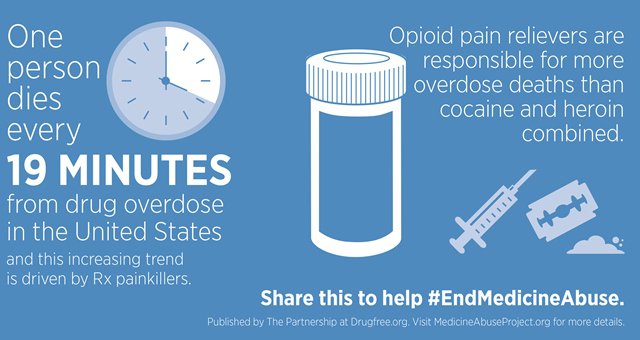When Doctor-Prescribed Opioids Cross the Line

More than 2 million people in this country suffer from substance use disorders related to opioid pain relievers, according to research published by the National Institute on Drug Abuse (NIDA). And in most of these cases, medical doctors legitimately prescribed these opiates to their patients, ranging from triathletes with torn ligaments to backyard gardeners with back pain.
The terms opioid and opiate are often used interchangeably. Opioids are drugs that have the same effect on the body as opium. Some opioids are made directly from opium — heroin, morphine and codeine, for example. Other opioids are manufactured to be chemically similar to opium.
These pain meds include oxycodone, hydrocodone and fentanyl, with brand names such as OxyContin, Vicodin, Percocet and Actiq. And as we said, no matter the name, opioid medications are legitimately used for treating pain.
Problems arise, however, when opioid drugs produce an intense feeling of well being and pleasure to the sufferer, prompting them to ingest more of the drug. Many patients develop a tolerance to the dosage, which means they need more and more of the drug to achieve the same effect.
Eventually, when the prescription for opiates runs out, or the price of the pills become too prohibitive, ordinary people — many of them athletes with sports injuries or mothers suffering arthritis — venture over to the dark side, engaging in illegal activities, such as “doctor shopping” for new prescriptions.
For teens and young adults, this craving can lead to rifling through the family medicine cabinets, or worse yet, the neighbor’s medicine cabinets. In desperation, some of these patients discover that street heroin — which produces the same effect as prescribed pills — is so much cheaper than their meds and often more easy to obtain than a renewed prescription.
Recent headlines only illustrate the dangers of prescription painkillers, with news of the performer Prince only the latest example of a probable connection with the misuse of such drugs. More recently, Speaker of the House of Representatives Paul Ryan held a press conference on the opiate abuse epidemic and was seen wearing a large purple ribbon to raise awareness of overdose prevention. Ryan said House Republicans have scheduled votes on a total of 18 bills addressing opioid abuse.
And now, a new drug ad trotted out during this year’s televised Super Bowl game, has the intention of curtailing something called “opioid-induced constipation.” Media consultants have even given the initials OIC to this condition, because, apparently, a set of initials makes it a legitimate physical condition. Like “restless leg syndrome” or RLS.
While a prescription for opioids can block pain signals, the drug can also block activity in the bowels. And “OIC” can continue to be an uncomfortable issue for as long as the patient is taking opioids to manage pain.
Which leads to how we see the issue here at Restoration Healthcare. It’s quite simple: Quit eating opioids like candy and you’ll return to normal bowel movements.
Moreover, if your doctor is currently treating you with a prescription for pain meds that include opioids and/or injections of cortisone, you should consult us before taking another pill. That’s because we think there’s a much better way to control pain. It’s a new way of looking at the systems that bring your inflammation under control and shift your body from constant pain to a state of healing and regeneration — without creating a dependency.
Our stomachs are so congested due of the environment in which we live and the bad food choices we continue to make and because no one is taking the trash out, so to speak. At Restoration Healthcare we attack pain by cleaning up your immune system, optimizing your nutrition absorption and addressing chronic inflammation. It’s that simple.
And if your physician isn’t addressing these issues, it might be time to do some doctor shopping for a new practitioner rather than another source for your OxyContin.

